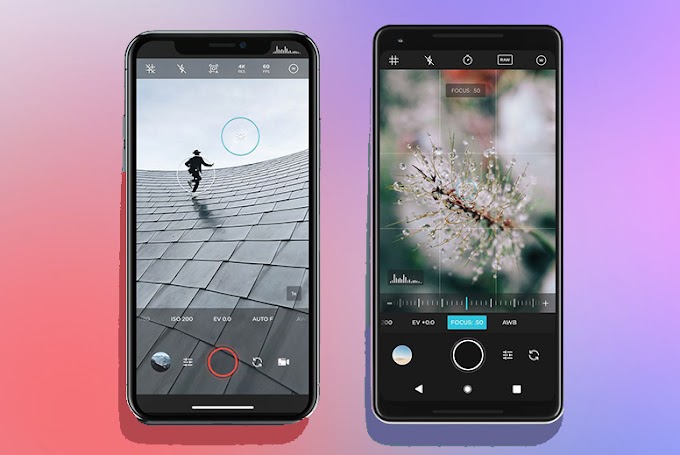Cell phones certainly make our lives easier, but they can also be dangerous, and I'm not talking about too much screen time. Sometimes smartphones explode literally
Let's find out why this happens and what to do to prevent it?
Let me clear one thing up before we get into the details: The smartphone doesn't explode, the battery does. And this usually happens with a lithium-ion battery, which most modern gadgets are equipped with.
Since 2016, cases of batteries igniting have significantly increased. That's why, as of this year, it's forbidden to store gadgets with these batteries in the cargo on an aircraft. In some cases, the phones not only explode but also ignite, swell, melt, and even boil.
Scientists from Canada were able to look inside the smartphone and find out how it works. We'll get into a bit of physics and chemistry now, but it’s important to understand, and I'll keep it simple.
The battery has a positive electrode charge - a lithium anode. It collides with the electrolyte - the substance that transfers electric current. The reaction of these two elements causes the battery to heat up. Then, the lithium anode's evil brother - a negative electrode, or cathode, joins the "party".
At this point, it gets hot: the battery heats up to 200 °C. And at this temperature, the electrolyte begins to decompose into flammable substances – oxygen, carbon dioxide, and other gases.
The battery can't withstand the load and just swells. And this is not swelling. Often, the party ends here, but sometimes the battery ignites. The outcome is not very pleasant, especially if the smartphone is in your pocket. Many people have said that their battery literally "boiled" like real acid.
So what exactly provokes this disaster inside the smartphone?
Now all lithium-ion is equipped with controllers, sensors, and charge balancers to reduce the risk of fire. But sometimes this doesn't help. In fact, there are several reasons:
1. The electrodes are different in each battery and have different charging speeds. The electric current that gets transferred to your phone during charging can simply be too much for your battery to handle. Nothing will happen after one charge, but if you give your gadget more energy than it can take too often, sooner or later it'll be a blast or explode.
2. The chip that monitors the charge level on the phone can fail as well. This small chip “filters” the charge of the current so that your phone doesn't “eat” anything extra. If the charge is exceeded, then the chip simply turns it off. But if this chip is broken, your phone will come to an end very quickly.
3. The battery in the phone can very easily be damaged if you drop your phone or accidentally step on it. If it's damaged, the correct order of operation of the electrodes will be violated, destroying the battery and provoking an explosion.
Remember when cell phones were thicker and heavier? Every year, developers try to make phones sleeker and easier to use, but the thin and fragile designs make the phones more vulnerable. In the event of a fall, the septum of the electrodes could be damaged, resulting in a short circuit that'll instantly lead the phone to overheat and ignite.
4. We can't know under what conditions the battery of our phone was created. It could have been scratched during assembly, disrupting the technology, or accidentally introducing small metal particles into it. Even minor damage can lead to breakage.
Production defects are rare, but nobody is completely safe from them. The probability that your phone will explode is small, but it's there.
How to protect your phone from exploration?
1. If you notice that the phone has become hot while charging, then it's better to unplug the cable and allow the phone to cool. Don't cover it with anything until the heat accumulated in the phone reduces.
2. Don't buy cheap or unreliable chargers. The phone manufacturers create chargers that perfectly match the battery in your phone. Yes, it'll cost a bit more, but it’ll be less than the cost of a new phone. The same goes for the battery itself. Only have it replace by certified personnel.
The companies whose phones exploded turned out to be innocent in most cases because the phone users had the batteries changed at unreliable establishments. Incompetent employees could accidentally damage the battery or replace it with a cheap and poor-quality one.
3. Many people like to fall asleep with the phone and put it under their pillow while charging. It'd be better to charge the phone in an open space. And it's best that don't overcharge your phone or not charge the phone overnight at all; just do it during the day when you can pay attention to it.
4. Don't leave your phone charging in hot places. The sun can raise the temperature of the battery and it won't lead to anything good.
5. If you notice that the battery of your phone is running out quickly, then bring it to an authorized service center. You'll most likely need to replace it.
6. Don't carry your phone in your back pocket. You might forget about it and accidentally sit down, which will lead to the deformation of the battery. You should be careful not only with the battery of the phone but also with the Power Bank.
In 2016 at the airport in Istanbul, a security officer forbade one passenger from bringing a power bank onto the plane. The passenger got angry and threw the device to the floor, resulting in a small explosion and smoke.
So if you’re ever angry and want to take it out on your device, think twice.
Batteries don’t only explode in phones. Many cases like Samsung Galaxy Note 7 blast, laptops, toasters, hoverboards, and electric cars, and more.
How to make your battery life last longer?
1. Once charged, pull out the cable. Continuing to charge a full battery will keep it under stress. It's like with muscles: after an intense workout, they should rest. And after a year of such excessive “training,” the battery capacity will noticeably decrease, and the phone will run out of battery faster. Also, the developers advise against recharging a phone to 100 percent.
2. Charge the phone as often as needed, but just a little bit. If you constantly charge it to 100 percent and use the gadget until it's completely out of battery, then the battery will be able to handle about 500-700 charge cycles.
If you let it drop to about 50 percent, then charge it a little and let it drop again, your battery will be able to handle 1,500 recharge cycles. The ideal level is to always keep the phone between 40 and 80 percent.
3. Watch the temperature. Not only can the sun's rays harm the battery, but also frost. Carrying your phone in the outside pocket of your jacket in winter is a bad idea.
4. It's recommended that you completely drain the battery (down to 0%) and then fully charge it, once a month. This "training" will help calibrate the mechanisms that are responsible for the correct display of the charge level.
5. Try to replace the battery in any of your devices at least once every two or three years.
Is it okay to leave the charger in the outlet when you're not charging the phone?
Experts say that there's no risk because during the charging process the phone completely controls the power supply and turns it off when you remove the charging cable from your gadget. But, if you have a poor-quality charger, then it's best not to risk it and pull it out of the socket, especially if you'll be gone for a long time.



---.png)


.png)

Please do not enter any spam link in the comment box